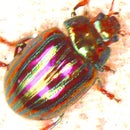Introduction: How to Make Cider
If you have access to a lot of free apples, you can easily make cider from them. Any apples will do, but they should be as ripe as possible. This instructable shows you a simple method that does not require any special equipment.
Update Oct 2014 - In response to popular demand, I have just published an extra Instructable about how to make the press in step 4. Just wood, a few plastic containers and a car jack - cheap but very effective :)
Step 1: Collecting Your Apples
The first thing is to get some apples. You will need quite a lot of large containers, because you need to collect about 4 to 5 times the volume of apples compared to the volume of juice you want to make into cider. The container shown here is a 5 gallon (22 litre) fermentation bin.
A sheet or blanket is also handy. Put your sheet under the tree, climb up the tree and shake it. Lots fall off. The advantage of this method is that generally the ripest apples tend to fall off, and seriously under-ripe apples stay on. When you put them into the bucket, pick the apples up by hand, so you don't get all the twigs, leaves, earwigs etc.
Step 2: Containers for Apples
You need a lot of apples. Here are about 20-22 gallons of apples, which made about 4 and half gallons of juice.
Step 3: Pulping the Apples
To release the juice, you have to smash up the apples, then press them. A long piece of timber is good for this (untreated with any sort of preservative!)
Step 4: Building a Simple Press
Here, a press was made from 4" x 3" (12cm x 9cm) timber bolted together. This forms a strong frame in which a tub can be placed.
Step 5: Preparing the Apple Pulp
The mashed apple pulp is put inside a nylon mesh, and put into a plastic box, with a single small hole drilled into it (to let out the juice). The cheapest available was this red mesh, an offcut from the fabric section in a shop.
Step 6: Pressing Using a Car Jack
A board was placed on top of the mesh containing the apple pulp, and a car jack placed between the board and the frame to apply pressure.
Step 7: Sterilising the Juice
This step is not essential, but is advisable if your apples are already quite mouldy or have lots of soft brown bits. Here sodium metabisulphite is being added. This realeases sulphur dioxide, which will kill or seriously retard any dodgy moulds, yeasts or bacteria which otherwise can spoil the juice.
Do not add your yeast for about 24 hours after sterilisation or it may be killed as well!
Step 8: Add Yeast
Any wine or beer grade yeast is good for this. You can add it straight into the juice, but if you have used sulphur dixide to sterilise your juice, you should allow 24 hours before adding the yeast. The wine yeast you add will quickly crowd out any traces of other natural yeasts. It will use up the oxygen in the juice to breed, and will start turning the natural sugars into alcohol.
Step 9: Checking Acidity
After a week or so, the yeast in your cider will have turned all the sugar into alcohol. At this point you can check to see how sour the apples were. If the apples were not completely ripe, or you only had wild apples the juice can be very sharp. This can be so sharp you can't drink it. You can make this less so by adding calcium carbonate (aka precipitated chalk). This will react with the acids in your cider and neutralise them. You may need to add several ounces per gallon, but do this in stages because when you add it, the reaction of acid and carbonate will release carbon dioxide, so it will fizz.
Step 10: Bottling
After you have left your cider for a few weeks, it will clear as the yeast settles, and it will be ready for bottling. It may not be completely clear, but that doesn't really matter because it can clear in the bottle.
For each wine size bottle, you will need to prime the bottles by adding just over half a teaspoon of sugar to each. This will restart the fermentation, but because it happens in a sealed bottle, the carbon dioxide released gets dissolved into the cider and creates pressure. When the bottle is opened later, the pressure is released, allowing the gas to esacpe, which creates the sparkle.
You should use bottle designed to stand pressure such as bottles made for sparkling wine. Seal your bottles with corks and champagne wire cages. You can use beer bottles with crown corks, but this needs a special tool.
Step 11: Storing Your Cider
For the first 3-5 days after bottling with, you should keep your bottles in a warm place. This will encourage the yeast to ferment the sugar, to will make the cider fizzy. After that, you should store the bottles in a cold place for about 2 weeks to allow the cider to settle and clear.
Step 12: The Finished Cider
Cheap and cheery, but actually rather tasty, and very satisfying to make...













